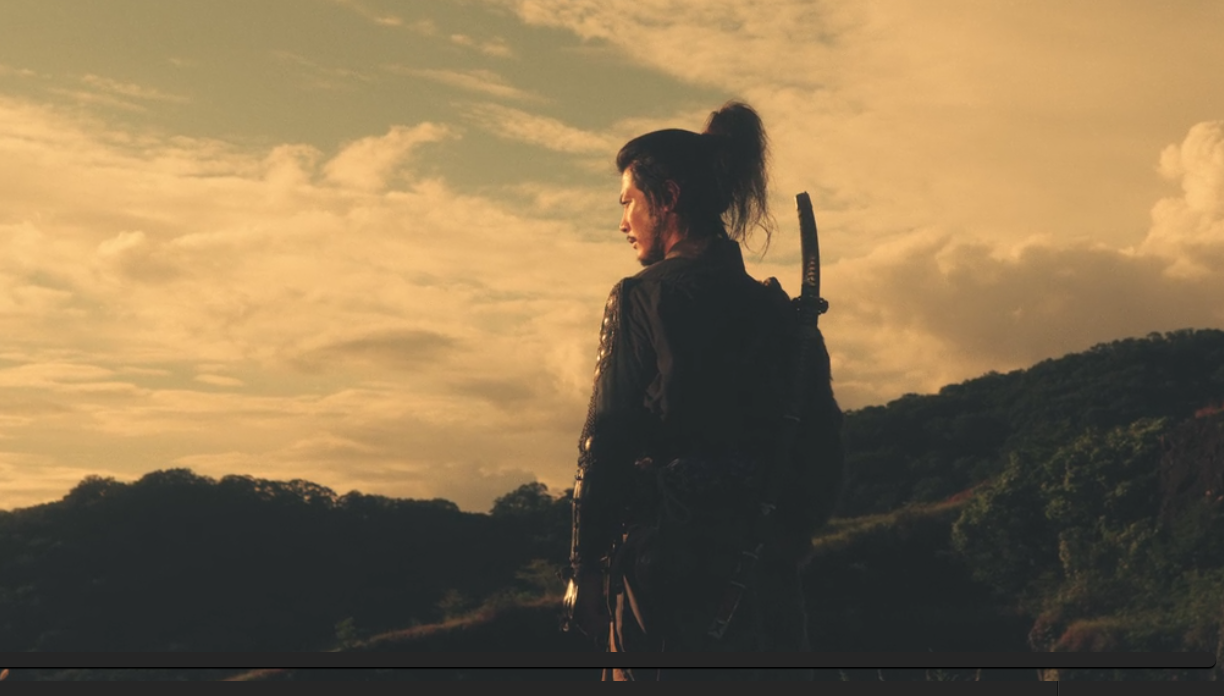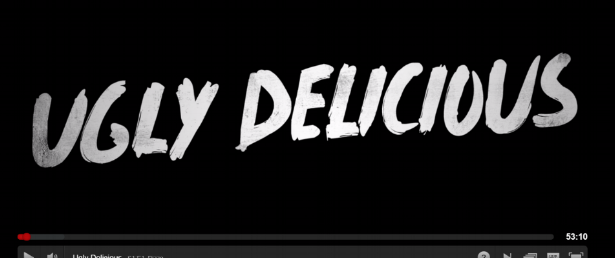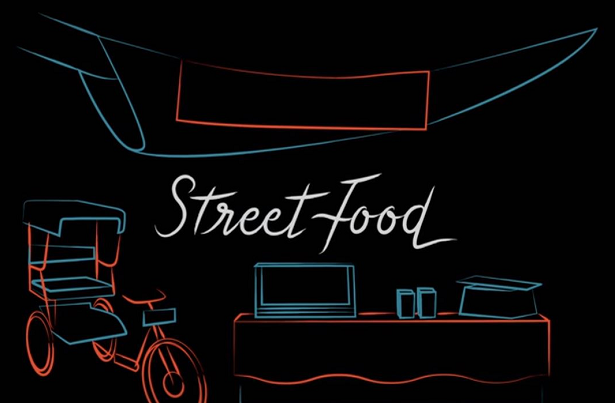Catastrophic Reviews - Isekai Izakaya "Nobu"

Why hello there, and welcome back to Kitchen Catastrophes Catastrophic Reviews. I’m going to warn you right off the bat, ladies and gentlemen: this post is going to be, in the condescending parlance of nerd culture, “Full weeaboo”. We’re talking about an anime that I watched on a streaming service solely FOR anime, based on a Light Novel series. So if you’re not ready for a discussion of Japanese pop culture, or a cartoon you need to read to enjoy, I fully understand, and will see you Monday. If you’re willing to take a walk down otaku way, on the other hand, let’s talk about a delightful little show I discovered last week, Isekai Izakaya “Nobu”.
And At Last I See The Light, And It’s Like A Fog Has Lifted
So, this is based on a series of Light Novels. Logically, therefore, the first place to start is: “what in Tarnation is a Light novel?” Then we can ask, “also, what is ‘tarnation’, while we’re here?” The answers to both of those questions are actually quite simple. ‘Tarnation’ is a minced oath, a term for when you take profanity and remove the profane elements. So like, yelling “fudgesicle” when you stub your toe because there are children around. Tarnation comes from darnation, a minced form of damnation, mixed with ‘tarnal’, as in ‘ee-tarnal darnation”. What was I talking about?
Varmints?
A “Light Novel” is a relatively specific name for a genre of literature in Japan with a lot of KIND OF similar parallels in Western books, but no real specific matches. Basically, light novels are relatively simple, relatively short books, with some interspersed illustrations. Lengthwise, they’re right at the bottom of what would be considered “normal” for a novel, at about 50,000 words. They’re written with fairly accessible language, in the sense that they’re not using a bunch of obscure words like ‘tarnation’ for example. The closest equivalent I would note is what Americans call a “beach/train novel”: books that aren’t intended to be amazing art, but are meant to be enjoyed in a relaxed atmosphere. They evolved out of the Japanese style of pulp magazines, another western influence. They’re very popular with, and mostly aimed at, Japanese young adults, from their mid-to-late teens into their 30s.
In order to make that almost-offensively straightforward and informative paragraph stick in my craw a little less, I’d like to point out that, because I’m a massive nerd, I originally confused light novels with visual novels, a completely distinct OTHER form of Japanese media. Specifically, visual novels are a form of media where you engage with a narrative as an active character, whose input is relegated to options in dialogue/activity trees. Basically, if you’ve ever played a video game RPG, and you have those conversations with NPCs where you pick what you say? It’s that. It’s just that for several hours.
So, the only GOOD part of a Bioware game?
Anyway, now that we’ve established the Form, let us pursue the FUNCTION. What exactly is Isekai Izakaya "Nobu" ABOUT?
I Want to Make a Pun off of “Nobu”, but I Can’t Decide if I Want to use Mario, DBZ, or Historical Japanese General Nobunaga Oda.
What a…list of options, Title Jon. Lot going on there.
Anyway, Izekai Izakaya “Nobu” is a show whose premise is basically already explained if you happen to speak Japanese. This is actually super common in Light Novels, for some reason. Where American audiences like short, pithy titles that may be thematically tied to the plot, Japanese Light Novel audiences prefer to know exactly what they’re getting into. Here are three 100% real Light Novel Titles, presented without comment.
-I Saved Too Many Girls, and Caused the Apocalypse
-In Another World* With My Smartphone
-I Couldn’t Get Real Satisfaction, [A Girlfriend] So I Became the Comrade to a Revolutionary
Stupid Sexy Socialists.
I assume. It's hard sometimes to know if Japan is drawing someone as "hot", "innocent", or "secretly a demon".
You see that lonely little asterisk up there? That’s because the word involved is important: “Another World” is the commonly accepted English translation of the Japanese Isekai. If that word looks familiar, it’s because you’ve already read it three times. Isekai is a recently growing sub-genre of light novels with a simple premise: the main character(s) was a normal person, but are now, for some reason, in a different world, typically a fantasy one, and typically with some other bonuses, because for some reason a common conceit of the genre is “the reason I’m in this new world is I died at the wrong time, and the afterlife gave me these perks as a bonus.” Look, I’m not going to fully commit to the old chestnut that “Japan is weird”, but they’re definitely different than America. Cultures are weird.
Anyway, the next word in the title is also super important: an izakaya is the Japanese form of a bar. Specifically, like, a tapas bar, or a pub/tavern. A place for drinks, certainly, but also a place for some food. Typically rather small, you pop in after work, have a couple of beers, a snack or two, then you head home for dinner, or you grab something there if you don’t have anyone waiting back at home. Just a comfy little place to have some drinks and snacks.
They kinda look like what you'd get if you tried to build American diners in the Middle Ages.
And “Nobu”, as the quotations imply, is just the name of the tavern in question. So the title translates to “the Otherworldly Tavern Nobu”. And the plot is based on that. Technically.
The Plot Thickens, like Tonkatsu Sauce
The basic conceit of the show is rather charmingly simple, if presented a little out of order. The beginning explains the concept: a relatively normal little izakaya opens up, (in Kyoto, we learn later), but its front door leads to a fictional medieval city.
That's another way of phrasing it, sure.
The town, we eventually learn, is basically set in an off-shoot of Germany. People try to order “wurst” an “schnitzel”, they call potatoes kartoffel. And the show is really just about exploring that interplay: the types of ingredients and techniques that are common in modern Japan, placed into what I’m tentatively considering around 1400’s “Germany”. Though that’s not a perfect time-slot. On the one hand, a guard captain doesn’t know what lemons are, despite lemons being widely available in Europe starting around the early 1500’s, but potatoes, a new world crop, are considered boring normal food. Then again, this is a world with two moons, so maybe trying to map it exactly onto real-life history is a fool’s errand.
And they're apparently having a Blue Moon AND a Blood Moon simultaneously, so the astronomy here has to just be the WORST.
But that interplay, between pre-modern European cuisine and modern Japanese, is pretty fun, when you get into it. In the second episode of the show, the company commander of the Palace Guards (the palace guards in general serving as essentially an ensemble cast member for the show) orders a dish of chicken. Why? Because in this time period, the eggs that chickens produce are too valuable to kill chickens before they’re past their prime, so chicken meat is something that requires long, slow cooking (this is why coq au vin exists, in the real world). And he can tell that they don’t have any pots of chicken stew going.
Of course, the staff here can, if necessary, just pop out the back door to modern Kyoto, and go buy fresh young chicken breast. So they make him the classic izakaya dish of Kara-age, or Japanese Fried Chicken. Fried Chicken in japan is handled like Popcorn Chicken in America: it refers to small boneless chunks of chicken meat, fried in a crispy coating.
What an unusual thing to specify, unless you knew the common perception of the time.
The dish utterly blows the mind of the commander, only for him to learn that he didn’t even eat it “properly”! (Kara-age is served with a lemon wedge, to be squeezed over the chicken. It’s the equivalent of ordering fries without sauce.) And there’s a lot of other fun examples: A big deal is made of the amount of glass, a relatively expensive luxury for the time, that the shop has. At one point, someone tries to rob the shop of their magic clean-water-making faucet. Another episode is focused on the relative horror that the people of this time feel about the idea of eating raw fish, a Japanese staple. And several times, it’s commented that they charge so little! It’s only a couple silver pennies for a fantastic meal and several beers! (Meanwhile, as far as the izakaya’s concerned, they’re being paid in pure silver coins, so it’s a great trade on their part as well!)
Brief nerdy aside: assuming a "tropfen" is analogous to a "Groschen", the silver coin of 1400's Germany, then it depends on how they're exchanging them. In raw silver, it's actually only worth about $1.50. But if they're selling them as rare coins, they could be worth anywhere from $6 to $1600. So...maybe?
And that’s the basic appeal of the show. Every episode deals with some new inhabitant of Aitheria, the medieval city, encountering the izakaya, and learning some important lesson from the dish they choose to have that day. The show as a whole, as well as site favorite Samurai Gourmet, relies on a sense of “gastronomic voyeurism”, which is the only phrase I can find in English to explain the idea that it’s surprisingly enjoyable to watch people enjoy a meal. Honestly, I think that could use a less sexually-connotated phrase, but I invented a new term LAST week, so it’s one of y’all’s turn.
Not you, Shinobu
The episodes are surprisingly short, with the actual plot of each episode only taking roughly 10 minutes. The last 4-5 minutes of each episode are actually live-action segments done in Japan, consisting of one of two alternating segments: either a Japanese chef makes the star dish of the episode, or one inspired by it, or a popular Japanese folk singer/actor/essayist/too-many-jobs hunts down the recipe at modern Izakayas.
It’s a new show, having only started premiering on Crunchyroll, the biggest name in anime streaming, back in April. At this juncture, they haven’t even completed their whole first season. (Or at least, probably haven’t: anime seasons tend to be about 22-23 episodes long, and this one has only finished 16 episodes.) Right now, you can watch the entire series, for free if you don’t mind ads, in under 4 hours. Heck, if you’re willing to be a little disingenuous, Crunchyroll offers you a 14-day free trial of premium ad-free content. If you watched at least 2 episodes a day, you’d finish the show long before you had to pay a dime!
And I’d say it’s worth it. The show, like Samurai Gourmet, is just a cute little enterprise, evoking what the trendy lifestyle texts are calling “hygge” these days: a sense of cozy contentment and well-being through simple pleasures. It’s the feeling of reading a nice book in your warm house on a rainy day, or cupping a mug of hot chocolate as snow falls. It’s a Danish concept, but one I feel is also hugely present in Japanese slice-of-life narratives. The show is cozy, and cute. From little ongoing jokes, like the fact that everyone calls the beers they order “whatsontap”, because the language barrier made them think that was a name, or one of my favorite bits, where a character encounters a new dish, and proceeds to eat it all, before thinking this:
"This is what I am now: a man who eats these cucumbers."
It’s warm, fun, cute, and generally a good time. And you can get it all in a lazy afternoon, for free. There’s not going to be many better deals than that.
If you want to contribute to Jon’s personal hot chocolate and rainy-day book fund, you can support the site on Patreon, helping us cover the technical expenses of running the site, and maybe one day covering the cost of the foods we cook! Of course, money can be hard to come by, so if you can’t spare any, then please feel free to support us solely through social media: just liking our posts lets more people see them, and sharing them yourself brings them to even more eyes!
MONDAY: REMEMBER ON MONDAY WHEN I SAID EITHER ME OR NATE WAS WRITING? WELL, I NEVER ACTUALLY CLARIFIED THAT. SO IT’S STILL TRUE.
NEXT THURSDAY: HONESTLY, I DON’T HAVE ANY IDEA. IT’LL DEPEND ON WHAT WE DO FOR MONDAY.















